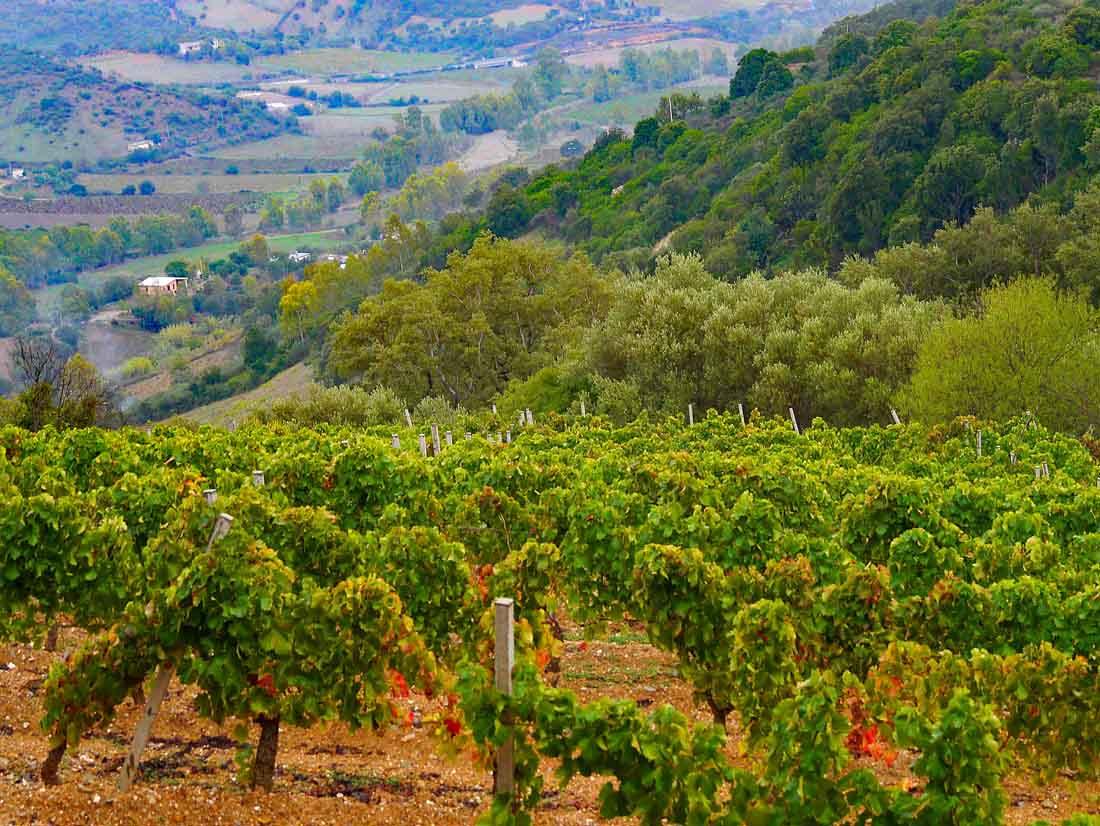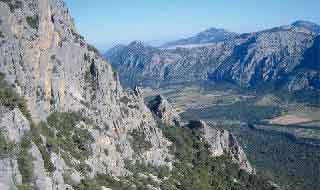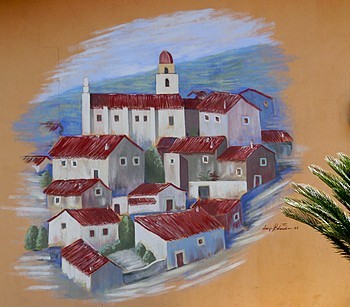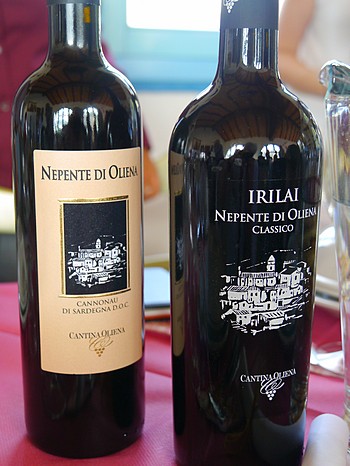
Nearly three-quarters of Sardinia’s Cannonau vineyards grace the steep slopes of Nuoro province. These half-wild uplands are a world apart from the sybaritic beach towns along the coast. They’re also vastly different from Sardinia’s lowland vineyards famed for the white Vermentino
 Remnants of the Nuragic culture from the Bronze Age persist in the hills, including two dialects of the ancient Sardinian language, which edges out Italian as a first language in some villages. The archaic Sardinians (1800bc-ad200) were adept architects, erecting more than 1,000 tall stone towers. Judging from the archaeological evidence, they also made wine.
Remnants of the Nuragic culture from the Bronze Age persist in the hills, including two dialects of the ancient Sardinian language, which edges out Italian as a first language in some villages. The archaic Sardinians (1800bc-ad200) were adept architects, erecting more than 1,000 tall stone towers. Judging from the archaeological evidence, they also made wine.
 Rome never conquered Sardinia beyond the coast. Cicero called the mountainous interior “Barbaria.” In Sardinian, it’s Barbagia. With vineyards as high as 700 meters, Barbagia is home to the most powerful and complex Cannonau wines. They are literally barbarian wines, though the term hardly does justice to their finesse. The winemakers of Cannonau di Sardegna DOC have put together a touring itinerary called La Strada del Vino Cannonau (www.stradadelvinocannonau.it). It covers most of the landmark churches, tiny museums, and points of sale for Cannonau. Marked by the sign at right showing a roadway and a goblet of red wine, it even includes a few wineries.
Rome never conquered Sardinia beyond the coast. Cicero called the mountainous interior “Barbaria.” In Sardinian, it’s Barbagia. With vineyards as high as 700 meters, Barbagia is home to the most powerful and complex Cannonau wines. They are literally barbarian wines, though the term hardly does justice to their finesse. The winemakers of Cannonau di Sardegna DOC have put together a touring itinerary called La Strada del Vino Cannonau (www.stradadelvinocannonau.it). It covers most of the landmark churches, tiny museums, and points of sale for Cannonau. Marked by the sign at right showing a roadway and a goblet of red wine, it even includes a few wineries.
Cantina Oliena
 This cooperative producer reflects one strain of Cannonau winemaking. Most growers are too small to make their own wine, so they band together as cooperatives. Cantina Oliena has about 100 members and produces about 350,000 bottles of top-flight wines. In addition to a sparkling Charmat-technique rosé, the cooperative makes three wines from Cannonau—all of them called “Nepente di Oliena.” Just to add to the confusion about Cannonau, the grape and the wines made from it near Oliena are called Nepente—a reference to the ancient Greek “medicine for sorrow,” also known as the “drink of forgetfulness.” Since the wines contain a minimum of 14 percent alcohol, careless drinkers will feel no pain (until the next day). The showroom is open Monday-Tuesday and Saturday mornings (Via Nuoro 112, Oliena, +39-0784-287-509, www.cantinasocialeoliena.it).
This cooperative producer reflects one strain of Cannonau winemaking. Most growers are too small to make their own wine, so they band together as cooperatives. Cantina Oliena has about 100 members and produces about 350,000 bottles of top-flight wines. In addition to a sparkling Charmat-technique rosé, the cooperative makes three wines from Cannonau—all of them called “Nepente di Oliena.” Just to add to the confusion about Cannonau, the grape and the wines made from it near Oliena are called Nepente—a reference to the ancient Greek “medicine for sorrow,” also known as the “drink of forgetfulness.” Since the wines contain a minimum of 14 percent alcohol, careless drinkers will feel no pain (until the next day). The showroom is open Monday-Tuesday and Saturday mornings (Via Nuoro 112, Oliena, +39-0784-287-509, www.cantinasocialeoliena.it).
About the wines
 The base Nepente di Oliena comes from vineyards at 200-300 meters. The grapes are hard-harvested in small buckets so they don’t crush each other. The cooperative makes this wine with 10-12 days of maceration on the skins, then ages it in concrete tanks before bottling. The resulting young wine is bright red tending toward purple. The nose contains pronounced notes of tart cherries and hints of roses and violets. The acidity is high and the tannins soft. It’s terrific with pizza and Pecorino di Sardo, the region’s characteristic sheep’s milk cheese.
The base Nepente di Oliena comes from vineyards at 200-300 meters. The grapes are hard-harvested in small buckets so they don’t crush each other. The cooperative makes this wine with 10-12 days of maceration on the skins, then ages it in concrete tanks before bottling. The resulting young wine is bright red tending toward purple. The nose contains pronounced notes of tart cherries and hints of roses and violets. The acidity is high and the tannins soft. It’s terrific with pizza and Pecorino di Sardo, the region’s characteristic sheep’s milk cheese.
The top of the cooperative’s Cannonau line is Irilai Nepente di Oliena Classico. It made from grapes grown at 300-400 meters given more than two weeks maceration. The wine ages in in large Slavonian oak barrels for at least a year, then another year in the bottle. Alcohol tops 15 percent, but the fruit concentration, the acidity, and the tannic structure keep the wine from tasting “hot.” The growers never have trouble producing fruit with a high concentration of sugar. But Cannonau’s polyphenols—i.e., the tannins—take a long time to ripen. This wine is strong and elegant with jammy cherry and blackberry fruits. As it opens on the palate with food, it gives off marvelous resinous scents of rosemary, eucalyptus, and wild thyme. It is spectacular with roast lamb.
